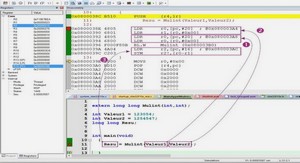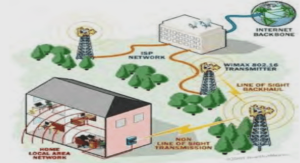Télécharger le fichier original (Mémoire de fin d’études)
Features of the spoken language
According to Buck (2010), most people might think that spoken texts and written texts share almost the same features in their linguistic system. As a matter of fact, there are some differences between them. One of the significant points of a spoken text is that people do not usually speak in sentences, instead, we use a lot of short phrases or clauses put together, especially in informal situations. In addition, the vocabulary and the grammar tend to be far more colloquial and much less formal when we speak. That means many words and expressions that are used in speech, seldom or never occur in written text. Moreover, speech takes place in real time, so the text is heard only once, and then it is gone. It is almost impossible for a listener to rehear a piece of speech while readers are able to go back to the text to clarify their understanding. He adds that speakers generally speak very quickly: three words a second is quite normal so that to understand speakers at this speed, the listening processes must be almost entirely automatic.
According to Buck (2010), the spoken language, being different from the written language, is ephemeral. People tend to speak quickly especially when it is their mother tongue. Therefore, it would create problems for L2 learners to understand native speakers. Nevertheless, after a while, with practice, the problem will disappear and the learners would cope with the second language. The next part of our work will be about what MENDELSOHN (1994) proposed to be needed by students in order to be able to deal successfully with understanding native speakers: the listening comprehension.
Listening comprehension
For MENDELSOHN (1994) listening comprehension is to have the ability of understanding the spoken language produced by its native speakers. Furthermore, RIVERS puts forward that teaching the comprehension of the spoken speech is therefore of primary importance if the communication goal is to be reached.
The study of listening comprehension in second language learning focuses on the role of individual linguistic units (e.g., phonemes, words, grammatical structures) as well as the role of the listener‟s expectations, the situation and context, background knowledge and topic, he adds.
Listening comprehension really contributes to understanding L2 in order to be able to communicate with native speakers. That importance of listening comprehension is the next part of our work.
The importance of listening comprehension
Looking at the existing approaches, the value of listening in language learning has changed over the past years. Listening used to be overlooked in some of them; however this skill is really valuable.
Listening comprehension is taking a greater and greater importance since it is one of the skills mostly used in oral communication. RIVERS (1981) agrees with that by saying that “Listening is used far more than any other single language skill in normal daily life. On average, we can expect to listen twice as much as we speak, four times more than we read, and five times more than we write”. Our brains are well programmed to learn languages through sound first then speeches. That is, we need to listen first before producing the language. Abilities to listen play an equal role as abilities to speak in successful communication. There are a lot of examples illustrating how important listening is. Firstly, babies make acts attention and concentration to explore sounds and speak their first words, to learn language and communicate through listening. Secondly, pupils at basic schools are encouraged to develop good listening abilities in their mother tongue so that they can be successful in everyday communication. Thirdly, students have to develop effective listening strategies that will enable them to learn another language.
It is clear that we always need listening comprehension. This skill is important from our childhood when we learn to speak our first words until we become adult and need to learn new languages in order to communicate with its native speakers. Knowing the importance of listening comprehension, we will have a look at the purposes for this part of the communication skills which is listening.
Purposes for listening
In real situations we rarely listen to somebody without any expectations what we are going to hear. This means that we usually have preconceived ideas of the content and these ideas are based on our knowledge about the heard information. These expectations are usually connected with the purpose of listening e.g. if we want to know what the time is we have to ask somebody.
BROWN and YULE divided the purposes for listening into two main categories which are interactional and transactional. Interactional purpose convey social reasons of communication such as chatting at a party whereas transactional is used to express exchange of information such as to follow instructions (HEDGE, 2000).
As for Galvin, as quoted in HEDGE (2000), there are five main reasons for listening such as to engage in social rituals, to exchange information, to enjoy yourself, to share feelings and to exert control.
And according to Underwood teachers should prepare their students for these situations:
Attending a lesson or a lecture which aims at understanding the main concept and to being able to distinguish the main information.
Listening to announcements, news and weather forecast in order to get relevant information.
Listening to live situation in which one takes no part. The person listening to the conversation is usually unaware of the context so that he or she cannot interfere into the conversation.
Listening to or watching plays, watching TV or listening to radio for pleasure.
Listening to someone giving a speech.
We can say that for each time we listen we have and should have a purpose for it to be successful. Teachers should accustom their students for at least five different situations. Having purposes for listening and Understanding the listening process can help us to best understand how the sounds which we hear become meaningful words. The next part exactly consists of the explanation of the listening process.
The process of listening
When listening to somebody or something, listeners use different strategies in order to understand the message. According to HEDGE (2000), there are two main views of listening which are bottom-up process and top-down listening process:
Bottom-up process
This type of process is linear as the meaning is gained at the end of the process.
HEDGE (2000) points out that we use our knowledge of the language and our ability to process acoustic signals to make sense of the sounds that speech presents to us. In other words we create the message from the individual parts e.g. from sounds to words, to grammatical units to lexical meaning. And at the same time with this process we use any clues that can help us with the meaning. Hedge claims that there are several clues such as the stress implied on certain meaningful units, relationship between stressed and unstressed syllables which help listeners to understand what they hear. Furthermore, we also use our lexical and syntactic knowledge to get the meaning of the words.
In other words Bottom-up processing means using the information we have about sounds, word meanings, and discourse markers like first, then and after that to assemble our understanding of what we hear one step at a time.
There exists another process totally different from the first one to understand what we are listening to; it is the top- down process.
Top-down process
Previous background knowledge of the topic of the conversation helps the listener to explain and interpret what the speaker is talking about and this prior knowledge enables him or her to predict what may come next. CELCE-MURCIA (2001) asserts that the top-down process allows the listener to avoid some aspects of the bottom-up process.
The listeners must put the language in a context of situation to get the meaning. Native speakers usually use their background and cultural knowledge; and their previous knowledge for listening situations as they expect that certain situations are connected with typical features and language. These facts make the listening comprehension easier as they help them to interpret what is being spoken about and what will probably follow (UNDERWOOD 1989).
In the two existing listening processes, teacher‟s role consists in teaching their students to pay attention to what they hear, to get the main idea and interpret it as well as subsequently respond to the information. The teaching of listening itself will be dealt with in the following part of the work.
Teaching listening
To teach listening is to integrate listening into the course. RANDRIANASOLO (1996) stated that when the teachers choose listening activities, they should consider techniques that are interesting and intrinsically motivating.
These techniques include:
Using authentic language and contexts.
Consider how students will respond to indicate whether their comprehension is correct or not.
Check whether the instruction was clear and match the level of the pupils.
In brief, there are many reasons for focusing on teaching listening, not least of which is the fact that we , as humans, have been learning languages first through our ears for thousands of years, far longer than we have been able to read.
Listening is a skill that is meant to be developed; it can and really needs to be taught as well. To best teach listening, teachers should know about lesson planning, which is the focus of our next point.
Lesson planning
UNDERWOOD (1989) suggests that before the lesson itself teachers should think about several steps. First of all they have to choose appropriate listening text and check the quality of the recording since bad quality recordings can cause serious problems to the listeners. Secondly, they have to take into consideration visual support as the visual aids are helpful for majority of the learners. Thirdly, they ought to think about special equipment which their students will need e.g. scissors, coloured pencils and so on. If the teachers decide that their students will need them it is their responsibility to tell them in advance. Lastly, teachers have to consider the listening procedure e.g. how to organise the stages, whether to use real-life recording or not and so on. The following section will best explain the stages which need to be followed when teaching listening.
The stages in listening with their respective criteria and features
According to UNDERWOOD (1989) listening is divided into three stages or phases which are called pre-listening, while-listening and post-listening. Now let us see further explanations of the criterions and features of each of the three stages.
o Pre-listening stage
As its name suggests, pre-listening is the phase which comes before having students listen to any material. According to Hedge, an important objective of pre-listening phase, which is crucial in listening activity, is to contextualize the text (2000).
UNDERWOOD (1989) as well as YAGANG (2008) both assert that this first stage can consist of a variety of activities. They aim at helping the teacher to focus the students‟ minds on the topic by narrowing down the things that the learners anticipate to hear and stimulating relevant previous knowledge and already known language. In this stage, the teacher provides background information. He or she can also ask the students to read something relevant to the listening text, ask them to look at some pictures, and discuss the topic or situation that would appear in the listening text together.
In general, the exercises in the pre-listening are supposed to help students think about how the while-listening activity will be organised. The role of this stage is to make sure that students have an idea of what will be required of them so that they can carry out the activities in the next stage. That next stage, the while listening, is the focus of the next part of our work.
o The while-listening stage
This stage contains activities done by the students as they listen to the listening passage. The aim of the activities done during this phase is to help the students to catch the main meaning of the text so that they have enough information to interpret it.
During this stage, the teacher plays the listening material or read a passage. The while-listening stage refers to the central part of a listening comprehension session. According to RAKOTOMALALA (2013) the activities of this stage fall either into recognition, prediction or interpretation.
When choosing a while-listening activity teachers should consider several criteria. UNDERWOOD (1989: 46) points out that good while-listening activities help listeners find their way through the listening text and build upon the expectations raised by pre-listening activities. The while-listening activity should be short enough and be interesting by bringing different types of listening exercises, since it would be unsatisfactory and maybe boring to do the same activity over and over again. Furthermore, the tasks that the teachers offer to the learners should be graded. This means that the learners start with listening to the main gist and then move to more and more complex listening activities; in other words from easy to more difficult exercises and from a lot of teacher‟s support to little.
UNDERWOOD (1989) suggests some examples of while-listening activities. Teachers can ask the students to compare the listening passage with what they predicted in the pre-listening stage. Then, students can be given a set of instructions and are supposed to show whether they understood them by a physical response. Filling exercises can be done as well; students listen to a dialogue and are asked to fill in the missing information. Another type of exercise is asking students to spot the difference; in it learners make responses only when they hear something different to what they already know about the topic or the speakers. Then, information transfer can be adopted, that is asking learners to fill or form lists, maps or plans from what they heard. The next exercise type is sequencing or giving learners a set of pictures to be put into the correct order. Finally, teachers can just ask learners to focus on specific items during the listening or more; ask them to match items according to the recording.
It is also important for teachers not to forget to give their students immediate feedback. That can be done by providing them with the correct answers, by asking them to talk the solutions over in small groups or by both. It would be quite problematic, not only for the teacher but also for the students, to talk about the listening tasks during the following lesson.
The objective of the while-listening stage is then achieved if students understand the material and are able to talk about it with their own words. Students wouldn‟t do so without achieving the supposed well-designed activities proposed by the teachers. The last stage, on which focuses the next part of our work, is also as important as the two firsts. This phase is the follow-up.
o Follow-up stage
There are a number of purposes why we need to incorporate follow-up activities into the lesson plans. One of them can be checking if the learners understood the listening passage or whether they finished the task successfully. This could be done by a decision making or asking them to express their views. BROWN (2006) puts forward that teachers can use post-listening activities to check comprehension, evaluate listening skills and use of listening strategies, and extend the knowledge gained to other contexts. A post-listening activity may relate to a pre-listening activity, such as predicting; may expand on the topic or the language of the listening text; or may transfer what has been learnt to reading, speaking, or writing activities.
According to UNDERWOOD (1989) a follow-up activity can help reflect on why some students have not been successful or missed some parts of the text. A good activity for finding a solution to this problem can be a discussion about the problematic parts of the listening text; teachers can draw students‟ attention to various lexical forms or features of the sound system.
When dealing with some grammar forms teachers can find the examples of the grammar structures in the listening text extremely useful as this shows their student the natural form and usage.
During the follow-up phase learners can be given a possibility to think about the attitude of the speaker or speakers since this can be found very difficult to them.
The teacher can also ask students to summarize a story they heard. This activity can be linked with problem solving. Then, role play can also be adopted; students can be asked to try out newly acquired things. Finally, students can be asked to write the end of the story.
As a conclusion, three phases are supposed to ensure the understanding of the L2 through listening. Those stages consist respectively in the activation of prior knowledge for improved listening comprehension, listening and making inferences, and presentation of extensive listening tasks leading to personalized speaking to reach the goal in the students‟ second language learning.
The next part will introduce ranges of exercises that teachers can include as part of the pre, while and post-listening activities.
Types of listening exercises
According to UR (1991) types of listening exercises can be divided into four main groups: listening with no respond, with a limited respond, with a long respond and with an extended respond:
Listening without any respond
This shows a real-life situation as there are some situations when no response is demanded. Listening without any respond involves these activities:
Reading a text and listening to it at the same time: It allows students to acquire the pronunciation of different phrases and words but on the other hand students will not develop strategies for listening comprehension without any text support.
Listening to book based materials: this is mainly based on students‟ previous knowledge about well-known stories. Although it is quite difficult to find out how good or bad the students were in the listening comprehension this type of activity is useful as hearing a familiar
material can make the students‟ task easier (UR, 1991).
Listening with visual support: the visual support involves pictures, graphs, maps and so on. While listening to a passage students have to follow the visual aid.
Listening for pleasure: such activities contain listening to songs, stories watching films and TV programs. The advantage of these activities is that students will enjoy them and the target language is presented in a different way but on the other hand students can just listen for pleasure without any willingness to understand it (UR). That may happen when students only listen to English songs for the melody and do not pay attention to what they are about nor the vocabulary items in them.
Listening with a limited respond
Exercises that are based on limited responds are usually made of long listening parts but are cut into short chunks and students are supposed to give a limited response to them. During these exercises, students give short and simple verbal or non-verbal answers.
Listening with limited respond exercises are those that we have presented previously as part of the while-listening stage, they are:
Following the instructions and acting to them by physical movements or drawing a picture.
Ticking off the words they heard: especially for vocabulary practice.
True or false activities- students have to decide whether the information was true or false.
Spotting the difference- students listen to a text and when they hear wrong information they make a response.
Guessing- teachers or students describe somebody or something and the class guesses what it can be.
Describing pictures, maps and so on then ordering them or identifying the main features (UR).
Listening with a long respond
For these activities students are asked to give comprehensive answers that prove that they understood the main idea of the text. They can be done either in while or post-listening stages. Listening with long respond involves these activities:
Summarizing, paraphrasing and translating- the main ideas of the text or retell the story in their own words in the target language or in their mother tongue.
Gap filling- during the listening students are supposed to fill in missing information according to what they heard.
Answering questions- students are asked to answer questions according to the listening text. The most common form of this exercise is a multiple choice exercise where only one answer is the correct one. This activity represents one of the most difficult ones as the listener has to store the information from the recording for a long time (UR).
Listening with an extended respond
This last group involves more skills than just listening since students are demanded to analyse and interpret the listening text (UR). They are recommended for the post- listening stage.
Jigsaw listening: students are divided into groups and each group is given different part of a listening text. After the listening they find partners from different groups and exchange the information in order to complete the task. It is worth mentioning that this skill does not necessarily require an extended answer.
Interpreting the listening text: students are asked to interpret various areas of the listening text such as the speaker‟s attitude, the meaning of the passage and so on (UR).
This sub-chapter provided a list of the most common listening activities used in language classes for teaching listening comprehension. Every teacher who is planning a listening lesson are required to take into consideration not only the above mentioned list of listening activities but also graded tasks since this will enable their students to develop their listening skills. However, some of the activities we have mentioned would be very difficult for some lycée students and some not. Whatever the exercises, listening passages, and machines used by the teacher are, there would always be difficulties that students would face when they are listening. The next point deals with those problems.
Difficulties during listening
According to UNDERWOOD (1989), cited in OSADA (2004), students‟ understanding of the spoken languages may be prevented by different problems.
BLOOMFIELD‟s report on what makes listening difficult summarizes that three aspects affect L2 listening comprehension: (1) characteristics of the listener, (2) characteristics of the language including the passage, and (3) characteristics of test-taking conditions.
Problems caused by the characteristics of the listeners
In terms of characteristics of the listeners, the report concludes that there are three factors beneficial to listeners: greater L2 proficiency, greater working memory capacity, and use of meta-cognitive strategies. CHEN (2005) agrees with Bloomfield and says that some human emotions such as anxiety, distress, frustration, and resistance of the learners may become an obstacle to the listening process.
The listeners‟ limited word stock or vocabulary may also become a barrier to understand what are being said. Furthermore, they may fail to concentrate to listen and miss some points that can be vital to the understanding of the passage. Without concentration, students are not able to use the strategies which are supposed to help them deal with listening, then would not be able to interpret what they have heard.
The students‟ learning habits can also cause problem. UNDERWOOD (1989) and CHEN (2005) agree that the way teachers pronounce words carefully and repeat everything over and over again at school may cause trouble to the students. Therefore, they may have trouble recognizing the pronunciation and the meaning of the spoken words when listening to native speakers.
Sometimes learners‟ inability to identify the signals of the target language may also cause problem. UNDERWOOD (1989) puts forward that it is not usually easy to recognise the indications of giving examples, repeating a point and so on.
In sum, students‟ feelings, their knowledge of the language as well as the way they were taught it, can cause barriers to the English language learning. But the understanding of the l2 does not depend only on the learners, sometimes the language itself as well as the passages given to them cause problems. The next point focuses on how the language and the passages present barriers to the learners.
Table des matières
GENERAL INTRODUCTION
0.1. REASON FOR THE CHOICE OF THE SUBJECT
0.2. AIMS OF THE DISSERTATION
0.3. SCOPE AND LIMITATION
0.4. GENERAL STRUCTURE OF THE WORK
Part1. A LITERATURE REVIEW OF LISTENING AND THE USE OF INFORMATION AND COMMUNICATION TECHNOLOGY WHEN TEACHING IT
1.1. Listening
1.1.1. The evolution of l2 teaching approaches and the place given to listening in them
1.1.1.1. The Audio-Lingual Method
1.1.1.2. The communicative Approach
1.1.1.3. The Total Physical Response
1.1.1.4. The Natural Approach
1.1.2. Features of the spoken language
1.1.3. Listening comprehension
1.1.3.1. The importance of listening comprehension
1.1.3.2. Purposes for listening
1.1.4. The process of listening
1.1.5. Teaching listening
1.1.5.1. Lesson planning
1.1.5.2. The stages in listening with their respective criteria and features
1.1.6. Types of listening exercises
1.1.6.1. Listening without any respond
1.1.6.2. Listening with a limited respond
1.1.6.3. Listening with a long respond
1.1.6.4. Listening with an extended respond
1.1.7. Difficulties during listening
1.1.7.1. Problems caused by the characteristics of the listeners
1.1.7.2. Problems caused by the characteristics of the passage and the language itself
1.1.7.3. Problems caused by the characteristics of the test-taking conditions
1.1.8. Developing the listening sub-skills in order to facilitate second language listening comprehension
1.1.8.2. The selecting skill
1.1.8.3. The inference skill
1.1.9. Using authentic listening materials
1.1.9.1. Definition of authentic listening materials
1.1.9.2. Advantages of the use of authentic materials
1.1.9.3. Reducing difficulties while dealing with authentic listening materials
1.2. ICT: INFORMATION AND COMMUNICATION TECHNOLOGY.
1.2.1. Definition of ICT
1.2.2. The different types of ICT with their respective contribution to language teaching
1.2.2.1. Visual aids
1.2.2.2. Audio files
1.2.2.3. Technological devices
1.2.3. The hypermedia notion
1.2.4. How the technology is useful to teach listening
1.2.5. The very part of listening ability we can develop by using technology
1.2.6. Advantages of using ICT
1.2.6.1. Advantages of using online materials
1.2.6.2. Advantages of using ICT in general
1.2.6.3. The role of computers in a classroom using ICT
1.2.7. Challenges and problems on the use of ICT
1.2.7.1. The availability of online materials
1.2.7.2. The interdependence between the tools you need
1.2.7.3. The complexity of the use of ICT
1.2.7.4. Lack of social exchange
CONCLUSION TO PART I
Part II: A FIELD INVESTIGATION CONCERNING THE TEACHING OF LISTENING IN MALAGASY LYCEES
2.1. The questionnaires
2.1.1. The questionnaires for the teachers
2.1.1.1. Distribution and problems encountered
2.1.1.2. Process of the questionnaire study
2.1.1.3. Analysis of the data collected through the questionnaire for teachers
2.1.2. Report of the questionnaire for the students
2.1.3. Conclusion to the study of the questionnaire for students
2.1.4. Comparison of the teachers and students answers in the questionnaire
2.2. Class observation report
2.2.1. Classroom Observation N°1
2.2.2. Classroom Observation N°2
2.2.3. Classroom Observation N°3
2.2.4. Classroom Observation N°4
2.2.5. Classroom Observation N°5
Conclusion to the class observations
CONCLUSION TO PART II
PART III: EXPERIMENTATIONS AND SUGGESTIONS
3.1. Solutions and suggestions to the problems that often prevent teachers from teaching listening
3.1.1. Teaching listening, far from being a waste of time
3.1.2. Using affordable machine such as USB radio, to teach listening
3.1.3. Downloading listening materials from the internet
3.1.4. Teaching listening even though it is not tested at the examinations.
3.2. Experimentations and comments
3.2.1. Experimentation N°1
3.2.2. Experimentation N°2-3-4
3.2.3. Experimentation N°5
3.2.4. Experimentation N°6
3.2.5. General comments on the experimentations
3. 3. Suggested lesson plans
3. 3. 1. Suggested lesson plan n°1
3. 3. 2 Suggested lesson plan n°2
3. 3.3. Suggested lesson plan n°3
3. 3. 4. Suggested lesson plan n°4
CONCLUSION TO PART III
GENERAL CONCLUSION
BIBLIOGRAPHY





